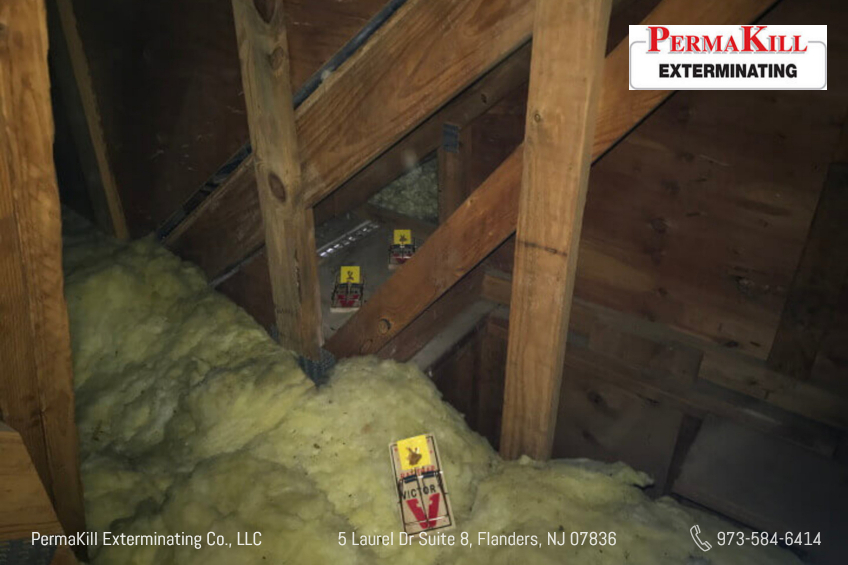


Mice, rats, and other rodents have lived alongside humans for centuries, following them to every continent except Antarctica. Human dwellings allow mice to have convenient access to food, water, and warm shelter. These rodents establish their nests inside human homes and settle there for generations.
So how can you get rid of mice nests inside your home? There are four main ways to keep mice and rats from invading your space:
You don’t want to welcome rats and mice inside your home. These unwanted pests are hazardous to human health and may cause a lot of structural damage to your house. Resolving this problem, however, requires you to track down the mouse infestation at its source: the nest.
Mice typically live in quiet and undisturbed places that keep them safe from predators. When they live close to humans, they prefer staying inside houses, barns, granaries, or fields where food is readily available. Mice could also build their nests outdoors beneath thick underbrush, tall grass, or shrubbery.
If you have mice in your home, you can also expect them in areas that provide them warmth and insulation against harsh temperature changes. They also wouldn’t be very far away from the closest food sources. If you see a mouse near your kitchen or another place to get scraps like a dumpster, their nest is most likely around 5 to 30 feet nearby.
Some ideal nesting places for house mice include:
Areas full of debris and secluded corners of attics, garages, or cluttered rooms provide mice a lot of concealment for their nests as well. While mice nests vary depending on the available nest space and construction materials, these nests are usually shaped like a dome or a ball with only one exit hole.
House mouse nests are made of soft materials that keep mice warm and cushy: rags, cloth, shredded paper, cardboard, food wrappers, string, and other fibrous materials like grass or dried leaves. In the wild, they build underground burrows to house these nests.
House mice are nocturnal animals -- they are active in the evening to avoid bright sunlight. This makes them difficult to spot and follow to their nests. However, you can pay attention to the signs they leave behind to figure out where they might be nesting. These telltale signs are:
Mice are incredibly resourceful creatures. They can drink water from leaks you didn’t know existed in your home and find shelter in any crevice or hidey-hole. It’s not enough to fill your home with DIY repellents, as some people suggest. There is no evidence that mice will leave your home because you use peppermint oil or sprinkle chili flakes on your floors.
You have to focus on cutting off mice from food, water, or shelter. This can be done by closing off potential entrances, setting up traps, keeping your home clean, and using your pets to discourage mice from overstaying their welcome in your home.
Exclusion tactics are an effective method to prevent mice from entering your home or keeping the rodent population in your house small. Mice, rats, and other pests can easily squeeze themselves into tight openings. If you can get a pencil through any crack, hole, or opening inside your house, chances are mice can get through them too.
Eliminate entry points by sealing cracks in your home’s foundation and walls, especially where there are vents and utility pipes. Check to see if all your doors actually seal against the threshold when closed as well. Remember, mice can gnaw through most sealants such as plastic, wool, and rubber. Your best bet is to fill gaps with steel wool or caulking.
Rodent control can be done in different ways: traps, bait stations, rodenticides, and professional pest control are the most popular methods. For homeowners attempting to do DIY rodent control, trapping is the safest method. Unlike rodent poisons, which pose risks to children and pets, traps can either kill the mice quickly or contain them for relocation.
It will do you no good to set up traps and bait randomly. You have to observe to see where the mice are living, passing by, and building nests. Once you have found these high-traffic places, you can set traps in the area where mice are most active. Snap traps, enclosed snap traps, glue traps, and humane traps are the four more common trap types you can buy from any hardware store.
It’s not advisable to buy cheap glue traps as they are considered to be inhumane. Large mice can carry the glue board with them and shake it off, while smaller mice die of starvation. Using small snap traps for large mice are similarly inhumane as the trap may amputate or injure the mouse without killing it.
Depending on your unique situation, you have to decide on how many traps to set up.
The more traps you set up means more eliminated mice. Place the bait facing the wall so the mice will be tempted to investigate instead of going around the traps. Mice are primarily nut and grain eaters so they would prefer peanut butter, hazelnut spread or even chocolate over cheese.
Mice can make do with almost any situation. They aren’t picky about food and can survive on just three to four grams of crumbs a day. Mice also don’t need to drink a lot of water and can live in piles of human debris. In order to get rid of mice, you have to focus your efforts on removing any resources they can take advantage of. This means regularly cleaning inside and outside your home. It’s easier to drive mice away if you do the following:
Many pets hunt mice, most notably cats and dogs. This is why farms have barn cats around to control the mice population and protect their crops. The smell of a mouse’s natural predators like cats and ferrets may prevent mice from getting interested in your house. However, this method is not always foolproof. Some pets aren’t interested in hunting down mice and it isn’t advisable to own a pet just for pest control.
It’s tempting to choose DIY mouse removal processes over hiring a professional exterminator or pest control expert. After all, going DIY would only cost around $30 while pest control may set you back hundreds of dollars.
However, trying to exterminate the mice yourself is a daunting effort. It is possible to achieve the results you want if there are only one or two mice. The problem is if the infestation is already severe. Mice reproduce at incredibly fast rates. By the time you learn how to trap mice or set up bait stations, your solutions would not be able to handle the infestation anymore.
On the other hand, you have a better chance of getting rid of the mice nests in your home if you hire experts who know what they’re doing. Another bonus is that these pest control specialists can teach you some new tricks or even help you prepare additional traps. You’ll get your money’s worth in aftercare tips and pest control recommendations.
Ask your friends and family around if they can recommend you a pest control service provider. You can also call to ask how much they would charge for a consultation, if they’re licensed by the state, or if they belong to a national association. This way, you can be sure your home will be in good hands.
PermaKill Exterminating has been in the rodent control business since 1984. After years of serving communities in New Jersey, we are well-experienced in dealing with mice infestations. We also continue to learn and apply the latest techniques in rodent control. If you have a pest problem in your home, schedule an inspection with PermaKill Exterminating.
Learn more: 6 Common Mistakes You Do With Rodent Poison